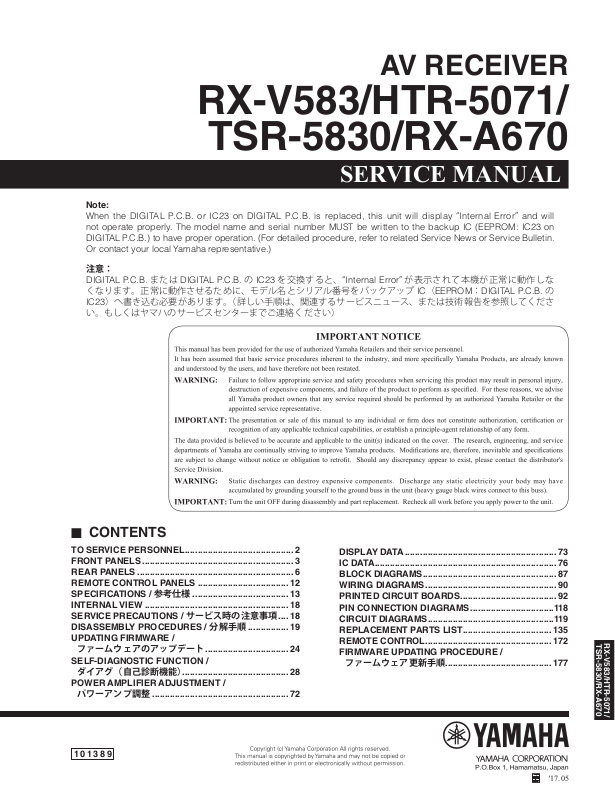lanimac
New Member
Hello! As stated, I would like to fix this AVR that someone gave me because it isn't working, I don't really want to see it tossed out and I have the sense that it might not be a complicated fix, I'll explain why below. I'll write up what I know and post some pictures. 
When I drove it home, it actually worked fine after not working previously at their house. This gives me the impression that something is loose and was jiggered back into place during the drive, shortly after that it jiggered back out I guess, because it doesn't work any more. I did the (info+tone control + power) to get it to reboot and give me some error codes, they're a bit different each time. It also seems to go into some sort of debugging mode after that initial error code which I can switch though the menu, some of them seem to check and return either OK or NG, which I've interpreted as NO GOOD since the text is also accompanied by some red squiggles.
I did find the manual for this model but there doesn't seem to be much useful information for this level of debugging in there, so I assume there's some other sort of technical schematics online somewhere but I can't seem to find them. Maybe you have to be a Yamaha tech to get those, not sure how it works. Anyway,
Error code is PS1 PRT: 130, the numbers can range between that and 141 or so. I seen on another forum that PS1 is power supply, PRT is protect, it's in some sort of protection mode from some electrical short or something, and then 130 has to do with the voltage that is out of whack.
Here's some pictures, there is nothing obvious in terms of something having melted, corroded, disconnected, etc.
If someone has a suggestion as where to start, that would be great. If you have instructions, offer them up like you're talking to a newbie.
Cheers!








When I drove it home, it actually worked fine after not working previously at their house. This gives me the impression that something is loose and was jiggered back into place during the drive, shortly after that it jiggered back out I guess, because it doesn't work any more. I did the (info+tone control + power) to get it to reboot and give me some error codes, they're a bit different each time. It also seems to go into some sort of debugging mode after that initial error code which I can switch though the menu, some of them seem to check and return either OK or NG, which I've interpreted as NO GOOD since the text is also accompanied by some red squiggles.
I did find the manual for this model but there doesn't seem to be much useful information for this level of debugging in there, so I assume there's some other sort of technical schematics online somewhere but I can't seem to find them. Maybe you have to be a Yamaha tech to get those, not sure how it works. Anyway,
Error code is PS1 PRT: 130, the numbers can range between that and 141 or so. I seen on another forum that PS1 is power supply, PRT is protect, it's in some sort of protection mode from some electrical short or something, and then 130 has to do with the voltage that is out of whack.
Here's some pictures, there is nothing obvious in terms of something having melted, corroded, disconnected, etc.
If someone has a suggestion as where to start, that would be great. If you have instructions, offer them up like you're talking to a newbie.
Cheers!

